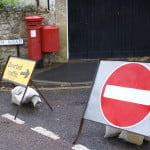This in from the CQC in their own words. Ed
England’s Chief Inspector of Hospitals has rated University Hospital Southampton NHS Foundation Trust as Requires Improvement following an inspection by the Care Quality Commission.
A team of 60 inspectors has found that the trust provided services that were caring, effective and well led. But the trust required improvement for providing safe and responsive care.
Inspection of all services
During the inspection in December and January the team of inspectors and specialists including doctors, nurses, managers and experts by experience visited Southampton General Hospital, the Princess Anne Hospital and Countess Mountbatten House, and outpatient services provided at the Royal South Hants Hospital.
Full reports including ratings for all of the provider’s core services are available online
Inspector: “A lot to be proud of”
The Chief Inspector of Hospitals, Professor Sir Mike Richards, said:
“University Hospital Southampton NHS Foundation Trust has a lot of to be proud of. Apart from providing essential services to Southampton and the wider population of the South of England, it is a major centre for teaching and research.
“We found urgent care services, medical care, maternity and gynaecology, and children’s and young people’s services to be good. Staff at every level were positive about working for the trust and the quality of care they provided. Generally care and treatment is provided in line with national guidelines, and outcomes for patients are often better than average.”
Hospital under pressure
He went on to say,
“Clearly Southampton General Hospital is under pressure. Some people have to wait too long for their treatment. Bed occupancy has been very high, with poor patient flow through the hospital, and too many patients having to be accommodated on the non-specialist wards, or simply waiting to be discharged from hospital.
“We found some of the buildings and equipment to be outdated. The maternity service at the Princess Anne Hospital was cramped into a building designed for fewer births. I recognise that there are competing demands for resources, but it is clear that the trust will need to work with partners and commissioners to anticipate and respond to the increasing demand for its services and to address the areas for improvement that we have identified in this inspection.”
Outstanding care and compassion
The inspectors found every service to be caring, with outstanding care and compassion in children’s and young people’s services. Families were positive about the care and support they received from all the healthcare professionals, with parents being able to stay close by and involved in their child’s care.
In the emergency department reception staff made considerable efforts to reassure and inform people even though they were busy and working under pressure.
The environment and facilities within the trust required improvement, and these were affecting patient safety and the patients’ experience in critical care, children’s and young people’s services, and on the trauma and orthopaedic wards.
Cramped buildings
Many areas of the hospital buildings were constructed before new buildings guidance was established, and areas such as the general intensive care unit and children’s wards were cramped. The trust was having to prioritise what needed to be fixed first.
While risks were being managed, staff were working in many areas that were below standard.
High bed occupancy
Bed occupancy at the trust was above the level at which it is generally accepted that it can start to affect the quality of care and the orderly running of the hospital. Patient flow was a significant concern, with some people waiting too long for a bed and at times of peak demand, people had to wait on a trolley bed in the corridor.
At the same time there were high numbers of patients ready to be discharged but unable to leave the hospital, often because they were awaiting the provision of community services, especially care home places.
Many medical patients were not accommodated on the appropriate wards. On one day of the inspection, there were 55 patients placed on a ward other than the one required for their medical condition. Although those patients were reviewed by doctors, some of the nursing staff said they did not always have the appropriate skills to care for those patients.
Highlights from the report
The reports highlight several areas of good practice including:
- The emergency department had learned from an investigation into patient falls to develop a coloured name-band scheme for patients. Staff would know at a glance which patients had specific requirements, such as a high risk of falls, because of the highly visible name bands.
- A vulnerable adults support team was based in the emergency department, and worked across the inpatient and community areas to support and safeguard vulnerable adults from abuse and harm.
- Older patients were assigned to named consultants according to each GP locality. Patients found they saw the same consultant every time, and found it was easier to approach consultants should they need any advice.
- A new initiative had been introduced to rapidly review all deaths in the trust. The group included representation from bereavement care, pathology, the patient safety team, patient support services and senior clinicians. This has improved the quality of information and communication with families regarding concerns, as well as recognition of patient safety issues, and the need to raise awareness about reporting incidents.
- To ensure children’s voices were heard and acted upon, the day care unit had developed the Pants & Tops initiative. Children were invited to write down what had been ‘tops’ or ‘pants’ about their hospital stay. Children who were very young, and were unable to write, could still provide feedback.
- The children and young people’s service used play leaders and youth support workers as advocates. The service had an ethos of compassionate care and peer support, and social events were actively encouraged for children and for the parents of children with cancer, and long-term diseases.
- The trust had implemented a Ready, Steady, Go initiative to support young people through the transition from children’s to adult services. Young people were involved in deciding when they were transferred.
The inspection found a number of areas where the trust must make improvements, including:
- Nurse staffing must consistently be brought up to planned levels to meet the needs of patients and support safe care. All wards must have the required skill mix to ensure patients are adequately supported with competent staff
- Equipment must be regularly tested and maintained, and a record of these checks kept.
- There must be suitable environments to promote the safety, privacy and dignity of patients in the cardiac short stay ward, G8 (care of the elderly) ward, and all critical care areas.
- There must be sufficient basic equipment in all departments and timely provision of pressure relieving equipment, beds and cots.
- The access and flow of patients across Southampton General Hospital must be improved, and action taken to improve delayed transfers of care.
- All operating tables in maternity theatres must be able to be lowered so that the risk of back injuries to the surgeon and risks to patient safety are reduced.
Quality Summit
The four reports which CQC publish today are based on a combination of its inspection findings, information from CQC’s Intelligent Monitoring system, and information provided by patients, the public and other organisations including Healthwatch.
On Monday the Care Quality Commission presented its findings to a local Quality Summit, including NHS commissioners, providers, regulators and other public bodies. The purpose of the Quality Summit is to develop a plan of action and recommendations based on the inspection team’s findings.





